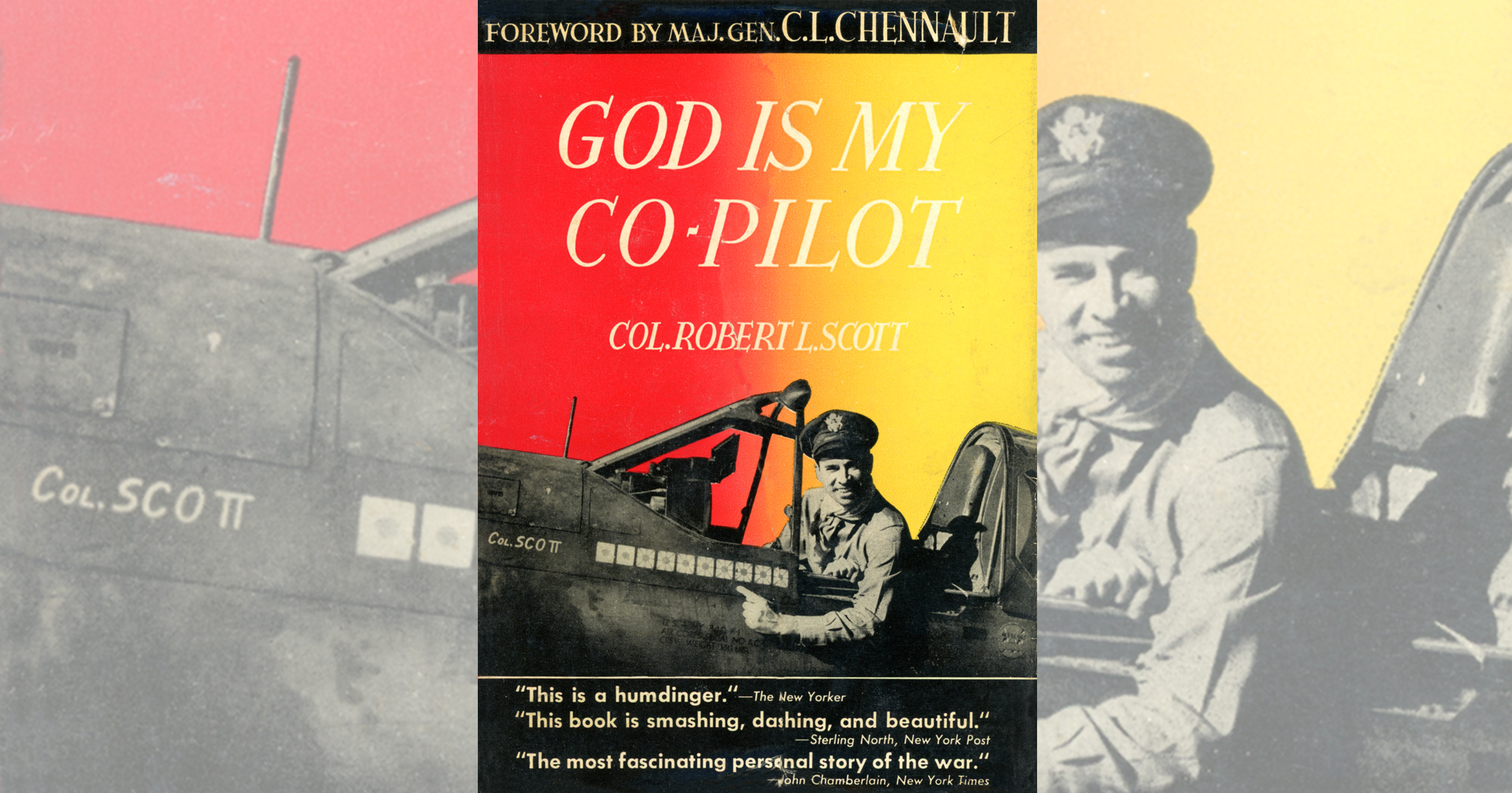God is My Co-Pilot: by Col. Robert L. Scott, 1943.
I grew up hearing stories about the air war in China. During World War II, my father was an aircraft electrical systems mechanic in Maj. Gen. Claire L. Chennault’s Fourteenth Air Force. My father knew and worked on the aircraft of many of the legendary pilots of that theater, including Colonel Robert L. Scott during his second tour of duty in China in 1944-45.
I was probably 12 or 13 in the late 1950s when I read God Is My Co-Pilot for the first time. I re-read it for the umpteenth time about two months ago. It was one of the first memoirs to come out of WWII, and it remains to this day one of the greatest. First published in 1943, it stayed in print well into the late 1960s.
God Is My Co-Pilot is the story of Scott’s first tour of duty in the China-Burma-India Theater, from July 1942 to October 1943. During that period he flew 925 hours of combat, totaling 388 missions, and shot down 13 confirmed Japanese aircraft, plus a number of probables. He was one of America’s earliest aces of WWII, and one of the first double aces.
Scott’s story was one you could not make up. A career fighter pilot, he was told in early 1942 that at age 33 he was too old to fly combat. Determined to get into the war, he bluffed and outright lied his way to India as a B-17 copilot, despite having no previous four-engine time. Once in Asia, he flew C-47 airlift missions over “the Hump” into China, where Chennault’s American Volunteer Group, popularly known as the Flying Tigers, had been fighting the Japanese for months.
Because the C-47s had no fighter escorts, Scott managed to convince Chennault to “loan” him a P-40 for that purpose. Before too long, Scott was unofficially flying missions with the AVG members, learning about their tactics firsthand.
In July 1942, the AVG was officially absorbed into the U.S. Army Air Forces, although only a few of the AVG members chose to remain in China thereafter. On the recommendation of Chennault and China’s president, Chiang Kai-shek, Scott was assigned to command the newly designated 23rd Fighter Group, composed initially of a scratch team of whatever fighter pilots and ground crew they could pull together from within the CBI theater. Chennault was recalled to active duty and assigned to command the China Air Task Force, which later grew into the Fourteenth Air Force.
It was a poor man’s war in China, and Scott tells the story of how Chennault’s men continually had to beg, borrow and sometimes steal the necessary fuel, tires, ammunition and especially spare parts to keep their airplanes flying. Cannibalization became the order of the day, with any unrepairable aircraft stripped for every last part that could be even remotely reusable. Despite those handicaps, however, Scott and his pilots continued the AVG’s record of rolling up vastly superior numbers of enemy kills against the small number of friendly losses.
God Is My Co-Pilot was and still is a great book, though unfortunately it was turned into a mediocre WWII B movie. Even though Scott himself served as a technical adviser for the film, he later admitted that several overly melodramatic scenes made him cringe.
Over the years a good many books have been written about America’s air war in China. God Is My Co-Pilot and Chennault’s own Way of a Fighter remain two of the essentials.





